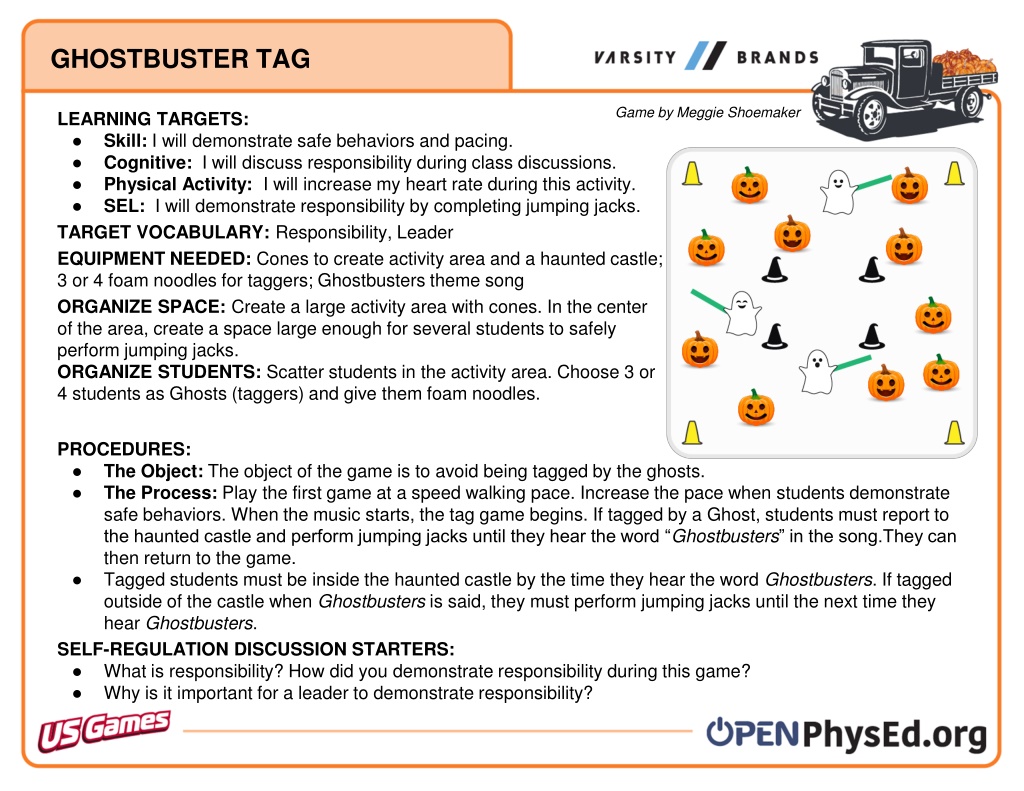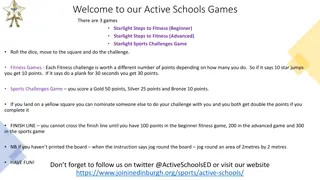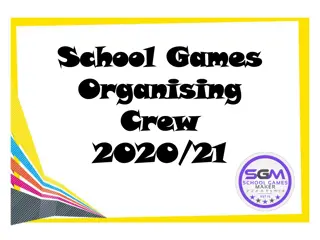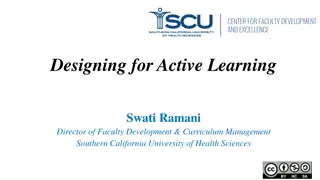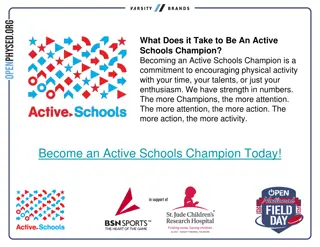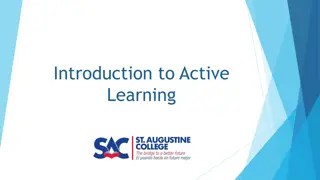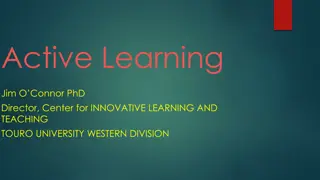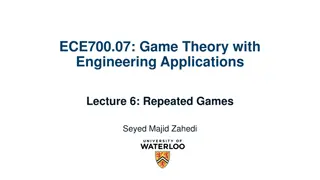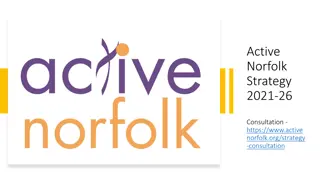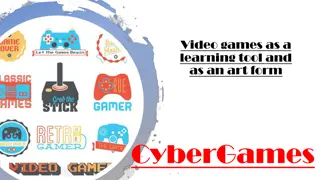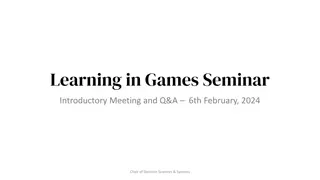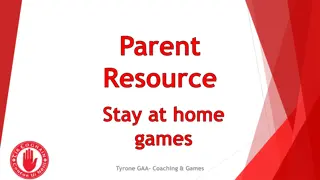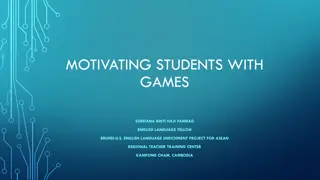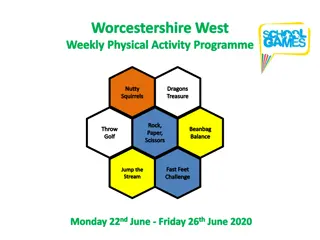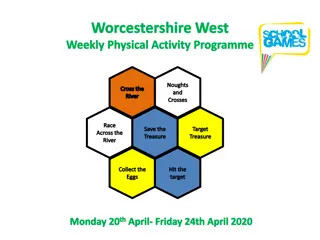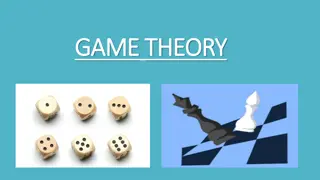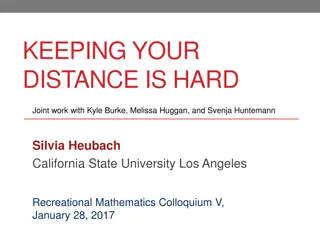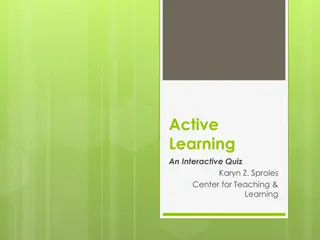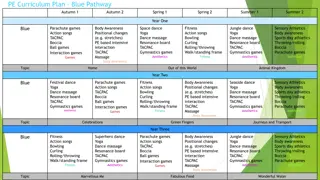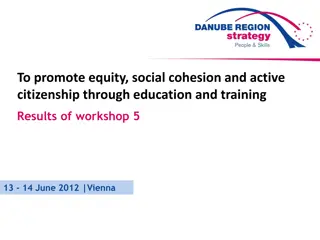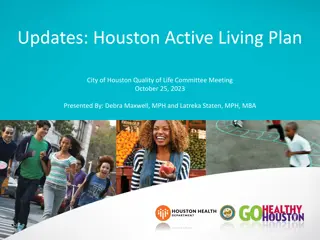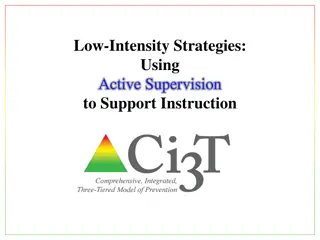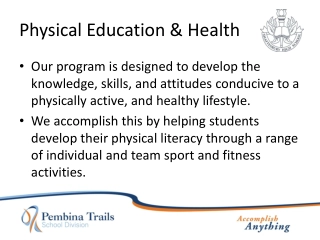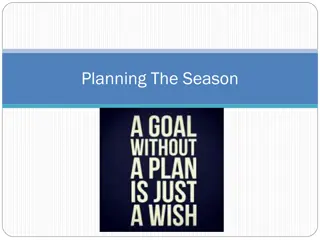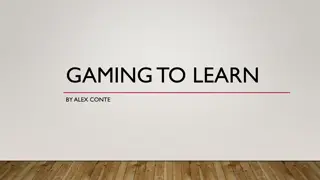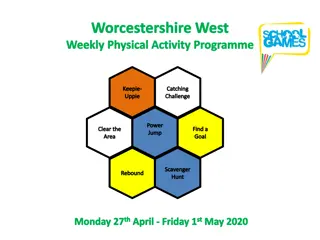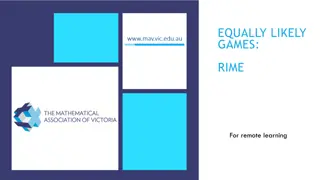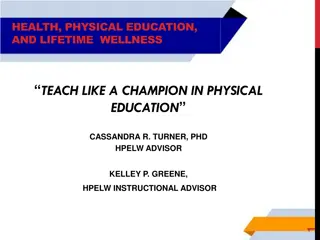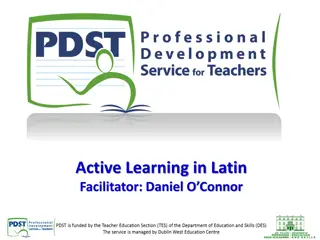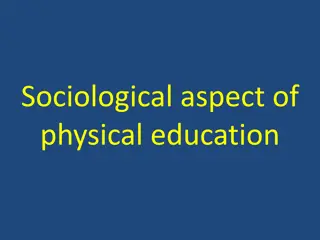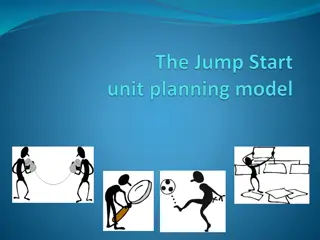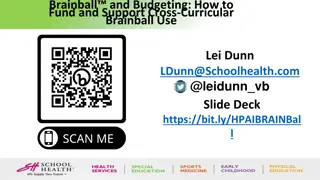Active Learning Games for Physical Education
Engage students in interactive and fun physical education activities like Ghostbuster Tag, Zombie Invasion, and Pickles in the Pumpkin Patch. These games promote skills like responsibility, leadership, and self-control while keeping students active and engaged. Each game has specific learning targets, equipment needed, organization instructions, and self-regulation discussion starters to enhance the overall learning experience.
Download Presentation

Please find below an Image/Link to download the presentation.
The content on the website is provided AS IS for your information and personal use only. It may not be sold, licensed, or shared on other websites without obtaining consent from the author. Download presentation by click this link. If you encounter any issues during the download, it is possible that the publisher has removed the file from their server.
E N D
Presentation Transcript
GHOSTBUSTER TAG Game by Meggie Shoemaker LEARNING TARGETS: Skill: I will demonstrate safe behaviors and pacing. Cognitive: I will discuss responsibility during class discussions. Physical Activity: I will increase my heart rate during this activity. SEL: I will demonstrate responsibility by completing jumping jacks. TARGET VOCABULARY: Responsibility, Leader EQUIPMENT NEEDED: Cones to create activity area and a haunted castle; 3 or 4 foam noodles for taggers; Ghostbusters theme song ORGANIZE SPACE: Create a large activity area with cones. In the center of the area, create a space large enough for several students to safely perform jumping jacks. ORGANIZE STUDENTS: Scatter students in the activity area. Choose 3 or 4 students as Ghosts (taggers) and give them foam noodles. PROCEDURES: The Object: The object of the game is to avoid being tagged by the ghosts. The Process: Play the first game at a speed walking pace. Increase the pace when students demonstrate safe behaviors. When the music starts, the tag game begins. If tagged by a Ghost, students must report to the haunted castle and perform jumping jacks until they hear the word Ghostbusters in the song.They can then return to the game. Tagged students must be inside the haunted castle by the time they hear the word Ghostbusters. If tagged outside of the castle when Ghostbusters is said, they must perform jumping jacks until the next time they hear Ghostbusters. SELF-REGULATION DISCUSSION STARTERS: What is responsibility? How did you demonstrate responsibility during this game? Why is it important for a leader to demonstrate responsibility?
ZOMBIE INVASION Game by Megan Northcote LEARNING TARGETS: Skill: I will demonstrate safe behaviors and pacing. Cognitive: I will discuss responsibility during class discussions. Physical Activity: I will increase my heart rate during this activity. SEL: I will demonstrate responsibility by moving safely and with consideration for others. TARGET VOCABULARY: Responsibility, Leader EQUIPMENT NEEDED: Cones to create boundaries; 10 hula hoops; 5 items in each hoop (foam balls, bean bags); 1 flag belt per 2 students ORGANIZE SPACE: Use cones to create a large activity area. Create a smaller circular area inside of the activity area to be the graveyard zone. Scatter hoops in the large area. Place 5 objects inside of each hoop. ORGANIZE STUDENTS: Create 2 teams 1 team wearing belts. The team with belts is the Zombie team and begins outside the perimeter of the activity area (safe zone). The team without belts is inside the activity area and is defending the candy inside of each hoop. PROCEDURES: The Object: The object of the game is for the Zombies to capture all of the candy inside each of the hoops. The Process: On the start signal, the Zombies can invade the activity area. They can only collect 1 piece of candy at a time and must make it outside of the activity area without getting their flag pulled. If a Zombie s flag is pulled, candy is returned to the hoop and the Zombie must report to the graveyard. Zombies in the graveyard can be set free if a fellow Zombie can make it into the graveyard without having a flag pulled. All freed Zombies get a free pass back outside of the activity area perimeter. SELF-REGULATION DISCUSSION STARTERS: What is a leader? How can you demonstrate leadership in physical education class? What does leading by example mean?
PICKLES IN THE PUMPKIN PATCH Game by Kristen Stuber LEARNING TARGETS: Skill: I will toss or roll foam balls using skill cues. Cognitive: I will discuss self-control during class discussions. Physical Activity: I will increase my heart rate during this activity. SEL: I will demonstrate self-control while competing and having fun. TARGET VOCABULARY: Self-Control, Self-Regulation EQUIPMENT NEEDED: 4 spot markers; 24 hula hoops; 1 foam ball or yarn ball per student; 1 cone per team to create a team patch ORGANIZE SPACE: Create a large activity area with cones around the perimeter. Scatter hoops in the activity area. Place 4 hoops in the center of the area with spots inside each hoop. ORGANIZE STUDENTS: Create equal teams of 3 to 6 players. Divide foam/yarn balls evenly. Give 1 team only the green balls (these are pickles). PROCEDURES: The Object: The object of the game is to collect as many hoops (aka pumpkins) as you can by tossing a ball so that it lands and stays in the hoop. Center hoops can only be take if ball stays on spots. The Process: On the start signal, all teams start tossing balls into the hoop (pumpkins). If a ball lands (and stays) inside a hoop, move to collect the hoop and bring it back to your team s area. If you miss with a toss, move to collect your ball and try again. If 2 balls land in a hoop at the same time, player use Rock, Paper, Scissor to determine who captures the pumpkin. The green team (the pickles) will use their green balls to try and knock other balls out of hoops before they re collected. The pickles are trying to see how long they can keep the pumpkins safe and in the patch. Simplify the game without a pickle team. How quickly can students collect all of the pumpkins? SELF-REGULATION DISCUSSION STARTERS: What is self-control? How did you demonstrate self-control during this game?
MONSTER MASH Game by Sara Phillips LEARNING TARGETS: Skill: I will throw foam balls using skill cues. Cognitive: I will discuss self-control during class discussions. Physical Activity: I will increase my heart rate during this activity. SEL: I will demonstrate self-control while competing and having fun. TARGET VOCABULARY: Self-Control, Self-Regulation EQUIPMENT NEEDED: 2 rows of folded mats; plastic pumpkins; halloween-themed stuffed animals; cones (covered with witches hats); 1 foam ball per student ORGANIZE SPACE: Use cones to divide the activity area in half. Set up a row of folded mats in the back of each activity area. Place objects (pumpkins, stuffed animals, etc.) on top of the row of mats. ORGANIZE STUDENTS: Create 2 teams, each team assigned one side of the activity. PROCEDURES: The Object: The object of the game is throw foam balls to knock the monsters off of the other team s row of mats. The Process: On the start signal, begin throwing at the monsters. You can defend your team s monsters by using a ball to block an incoming throw. Once a monster is knocked down, you cannot pick it back up. We ll keep playing until one team knocks off all monsters. Then, we ll reset the game and play again. SELF-REGULATION DISCUSSION STARTERS: What is self-regulation? What does self-regulation look like in physical education class? What strategies can help us with emotional self-regulation?
HAUNTED HOUSE Game by Paul Redman LEARNING TARGETS: Skill: I will demonstrate safe behaviors and pacing. Cognitive: I will discuss integrity and fair play.. Physical Activity: I will increase my heart rate during this activity. SEL: I will demonstrate integrity by following all rule of the game. TARGET VOCABULARY: Integrity, Fair Play EQUIPMENT NEEDED: 60+ bean bags / pool noodle slices; 4 basketballs; 40 low-profile cones; 4 12 cones; 4 pool noodles; 1 hoop per team; scooters (optional) ORGANIZE SPACE: Use low-profile cones to build a Haunted House with 4+ entries/exits for students to enter and leave. Create the kitchen in the center with basketballs (pumpkins) on 12 cones. Scatter bean bags & noodle slices (candy) throughout the Haunted House. ORGANIZE STUDENTS: Place 1 hoop per team around the perimeter of the Haunted House. Create even teams. If desired, each team with a scooter. Designate 2-4 students as ghosts with pool noodles. PROCEDURES: The Object: The object of the game is for each team to collect as much candy and pumpkins as possible while avoiding ghosts. Candy is world 1 point and pumpkins are worth 5. The Process: When the music starts, 1 player per team will enter the haunted house (either on foot or on the scooters). The game is played in relay format. Students in the house can collect 1 piece of candy or pumpkin and return it to their team s hula hoop. If tagged, students must return to their teams empty handed. When the music stops, we ll count our candy. SELF-REGULATION DISCUSSION STARTERS: What is integrity? How is it related to fair play How does integrity help you be a better teammate?
I PUT A SPELL ON YOU Game by Jennifer Carver LEARNING TARGETS: Skill: I will demonstrate safe behaviors and pacing. Cognitive: I will discuss integrity and fair play.. Physical Activity: I will increase my heart rate during this activity. SEL: I will demonstrate integrity by following all rule of the game. TARGET VOCABULARY: Integrity, Fair Play EQUIPMENT NEEDED: 3-4 pool noodles for taggers; cones to mark boundaries; I Put a Spell on You music ORGANIZE SPACE: Create a large activity area for a safe tag game. ORGANIZE STUDENTS: Designate 3-4 students a witches and give them a magic wand (noodle). All other students are Trick-or-Treaters. Scatter students. PROCEDURES: The Object: The object of the game is to avoid being tagged by witches while also helping classmates who have been tagged. Witches are trying to put a spell on trick-or-treaters by tagging them with the noodles. The Process: This game is played at a speed walking pace. Tell the witches what their locomotor spell is (e.g., skipping, galloping, etc). When the music starts, the game begins. Witches will try to tag trick-or- treaters with their magic wands and saying, I put a spell on you! SKIP! When tagged, trick-or-treaters must skip (or perform the locomotor spell given). Students can helped tagged players by tapping them safely on their shoulders and saying, the spell is broken! Students then return to a speed walking pace. SELF-REGULATION DISCUSSION STARTERS: What does fair play looking like in physical education class? How is fair play related to fun during physical education class time?
PUMPKIN BALL Game by Tracie Hammond LEARNING TARGETS: Skill: I will demonstrate safe behaviors and shoot only from spot markers. Cognitive: I will discuss grit and determination during class discussions. Physical Activity: I will increase my heart rate during this activity. SEL: I will demonstrate determination by working hard and continuing to shoot the basketball using shooting skill cues. TARGET VOCABULARY: Grit, Determination EQUIPMENT NEEDED: 1 basketball per student or per pair; basketball hoops, Spot Markers; Pumpkin Ball Math Flashcards ORGANIZE SPACE: Play on a basketball court with multiple hoops. Place a pile of flashcards in the corners of the court as well as on the half court line. Scatter spots in shooting-range based on student skill level. ORGANIZE STUDENTS: Scatter students in the activity area each with a basketball. Or in pairs with 1 ball per pair. PROCEDURES: The Object: The object of the game is to earn shots by correctly answering flashcards. The Process: When the music starts, dribble to a pile of flashcards and pick one up. If you re playing in pairs, bring the card back to your partner and answer the equation. Put the card back in the pile when finished. If answered correctly, you earn 1 shot. Dribble to a spotmarker next to a hoop and take your shot. Rebound your ball and dribble to a different pile of flashcards. Continue until you hear the stop signal. SELF-REGULATION DISCUSSION STARTERS: What is grit? How is grit related to determination? Why is grit and determination important for you as you try to reach personal goals?
GHOST HUNT Game by Tiffany Beam LEARNING TARGETS: Skill: I will demonstrate safe behaviors while hunting for ghosts. Cognitive: I will discuss grit and determination with my classmates. Physical Activity: I will increase my heart rate during this activity. SEL: I will demonstrate determination by working with my team to complete exercises and hunt for ghosts. TARGET VOCABULARY: Grit, Determination EQUIPMENT NEEDED: 50-100 cones; 40-90 colored yarn balls or bean bags; 10 white yarn balls or paper Ghosts ; 6 hula hoops; exercise charts ORGANIZE SPACE: Create a grid of cones with colored and white yarn balls / bean bags hidden under the cones. Place hula hoops up in a row at one end of the activity area. ORGANIZE STUDENTS: Create 6 even teams, each team at a hoop and an exercise chart. PROCEDURES: The Object: The object of the game is for your team to collect as many ghosts as you can. The Process: This is a speed walking game (or use scooters). On the start signal, teams will send 1 student (relay race format) out into the graveyard to hunt for ghosts. Look under 1 cone. If that cone is hiding a white yarn ball (ghost) bring it back and put it into your team s hula hoop (ghost trap). If the cone you looked under is hiding a colored object, leave it there and move back to your team. Look on the exercise chart and lead your team in the exercise listed under the color that matches the object you just uncovered. When done, the next player moves out to hunt for a ghost. SELF-REGULATION DISCUSSION STARTERS: In your own words, what does determination mean? How is grit and determination related to your personal health?
THE GREAT PUMPKIN RUN Game by Sara Phillips LEARNING TARGETS: Skill: I will practice my running pace in preparation for race day. Cognitive: I will discuss social and emotional concepts as a class. Physical Activity: I will walk/jog/run in preparation for race day. SEL: I will demonstrate grit, leadership, fair play, and self-regulation. TARGET VOCABULARY: Self-Regulation, Leader, Fair Play, Grit EQUIPMENT NEEDED: Cones, signs and/or sidewalk chalk to mark run course; stopwatch. (OPTIONAL) Great Pumpkin race bibs; participation awards; clementine prizes for top 3 runners (with jack-o-lantern faces) ORGANIZE SPACE: Create a running course that is age appropriate for your students. K-1: mile; 2nd+: mile. ORGANIZE STUDENTS: Students begin at a starting line and end at a finish line. PROCEDURES: The Object: Complete the Great Pumpkin Run as fast as you can. The Process: Throughout the Pumpkin Patch Games in the month of October, allow students to walk/jog/run the course to practice (i.e., train for the big race). Set a race date and celebrate with decorations, music, race bibs, and healthy prizes. Use music as your start signal. When the music starts, runners can run and the clock starts. Give participation awards to all students. Award Clementine Jack-O- Lanterns to the top 3 finishers. Consider having a running and walking category for prizes, especially if you have students who are reluctant runners. Take pictures and have fun! SELF-REGULATION DISCUSSION STARTERS: What is grit and how does it relate to training for a running race? How can you demonstrate leadership in an event like The Great Pumpkin Race? What does fair play look like during a running race event like The Great Pumpkin Race? Why is self-regulation important on race-day? What emotions might need to be regulated?
